Classification of the transmission line is based on the voltage, length of the conductor and, types of current flow. We use the transmission line for transmitting the power from generating station to the load center.
It is mainly classified into two types. They are;
- AC Transmission Line
- Short-Transmission Line
- Medium Transmission Line
- Pi Model of a Medium Transmission Line
- T Model of a Medium Transmission Line
- Long Transmission Line
- DC Transmission Line
1. AC Transmission Line
AC transmission line has a bunch of conductors which carry the AC power. The conductor has certain resistance R, inductance L, capacitance C & leakage conductance G.The value of R, L, C, and G depend on the length of the transmission line.
These parameters along with the load affect the performance of the transmission line.
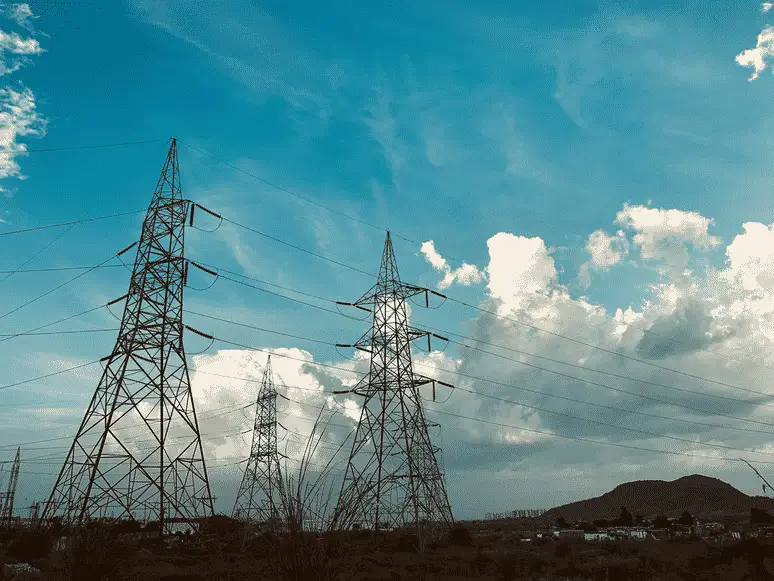
The performance parameters of the transmission line are regulation, voltage drop, power loss & efficiency during the steady-state and transient condition.
The classification of the transmission line is given below.
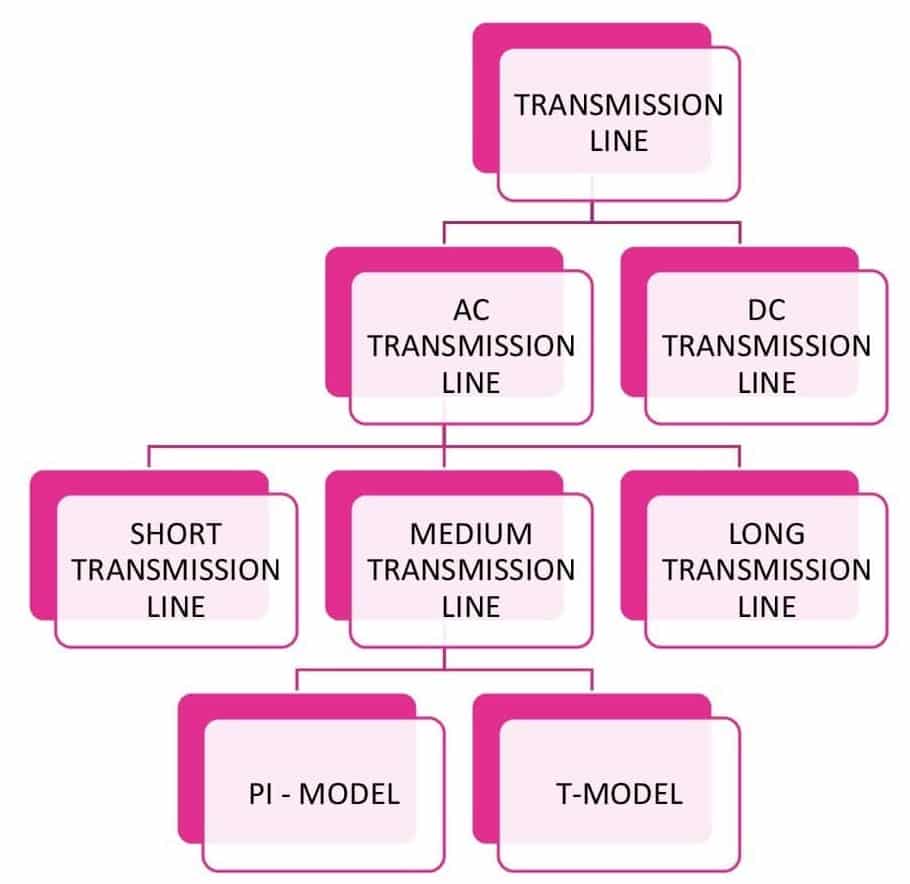
Classification of AC Transmission line
Short Transmission Line
The short transmission line has;
- The effective length less than 80 KM(50 Miles)
- Voltage less than 69 kV
The capacitance of the short transmission line is less because of its short length. Therefore, the effect of shunt capacitance is negligible. Thus, the short transmission line draws less charging current.
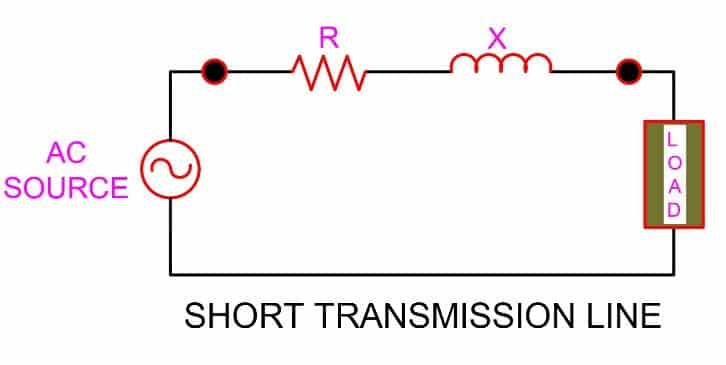
In view of the above, we ignore the line shunt capacitance for determining the line performance. We take only resistance and inductance of the line for the calculation of line performance parameters.
Medium Transmission Line
The length of the medium transmission line is in the range of 80 to 240 KM. The medium transmission line has more shunt capacitance in comparison to the short transmission line. It is because of increased length. We can consider the shunt capacitance of the medium transmission line lumped at one or more points of the line. The lumped shunt capacitance of the line is more at high frequency. The leakage inductance and capacitance are less at high frequency. And, Therefore, we can neglect the leakage inductance and capacitance.
We can categorize the medium transmission line into the Pi – model and T – model.
Pi Model of a Medium Transmission Line
In the nominal Pi model, it is assumed that half of the capacitance of the line concentrate at each end of the line.
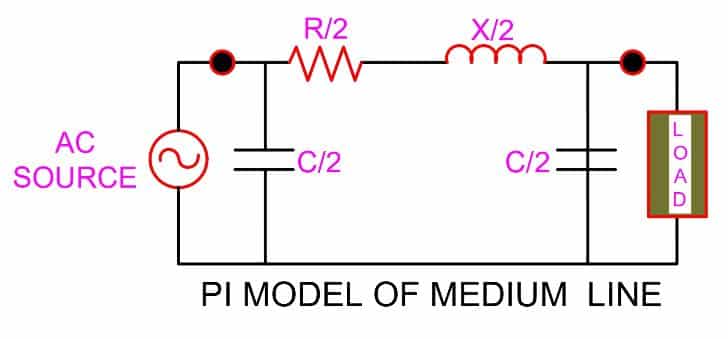
T – Model of a Medium Transmission Line
In the T model, it is assumed that the capacitance is concentrated at the center of the line.
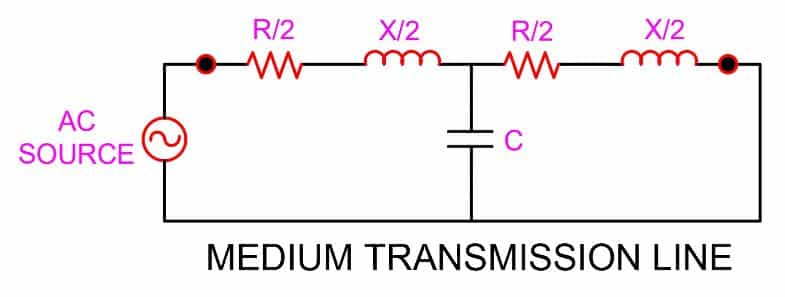
Long Transmission Line
The long transmission line has a length of more than 240 km. All the four parameters (resistance, inductance, capacitance, and leakage conductance) are equally distributed along the entire length of the line.
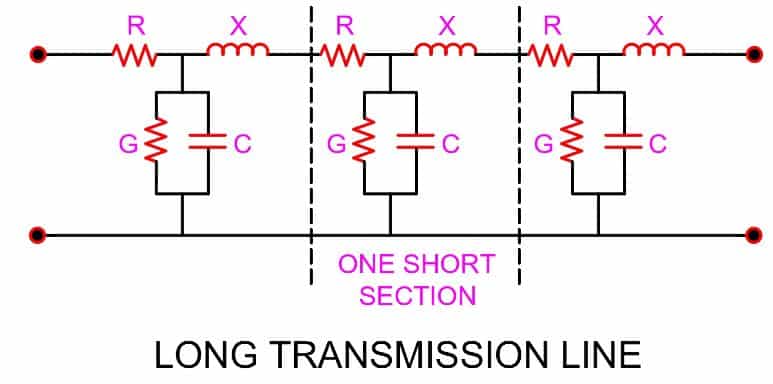
2. DC Transmission Line
The power loss in the transmission line increase with the line length. The drastic power loss happens when we transmit large AC power. The solution to this problem is to use DC transmission. The DC power transmission has the following advantages over the AC transmission.
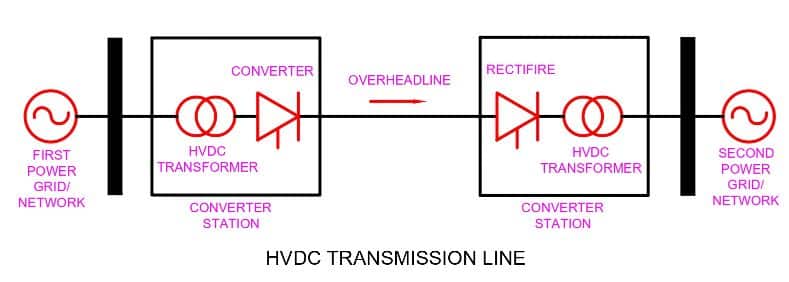
- For long distance transmission, the DC line loss is very low.
- Initial investment of DC transmission system is high for short distance transmission.
- DC transmission is very economical for bulk power transfer at a long distance.
The DC transmission system has the converter station at the sending end. The generated voltage is step-up and converted to DC by converter or rectifier at sending end. The DC is transmitted over a transmission line, and at the load end, it is again converted into AC by inverters. The DC system permits the power transmission between two unsynchronised AC systems.
Read Next :